It's taken almost two weeks, but most of the dust has finally settled from the 2018 mid-term elections. What initially appeared to be a mixed picture for Donald Trump and the Republicans has grown darker - but there is a Sunshine State silver lining.
On the morning after polling, Mr Trump said the results showed almost a "complete victory".
Even at the time that was difficult to square with the reality that his party had lost control of the House of Representatives for the first time in eight years.
There was the prospect that the Republicans were going to make historic gains in the Senate, however. The president boasted of the possibility of a four-seat pick-up - which would build the largest majority for his party in more than a century.
Such a historic win was not to be.
Here's a look at some of the most significant developments since the first round of election-night instant analyses, many of which were written when it was challenging to spot the Democratic wave among the evening's early returns.
Orange (County) is the new blue
It became clear near midnight on election day that Democrats would take control of the House of Representatives. The only question was the size of their majority.
Much of that depended on the outcome of very close races and the slow trickle of results from California mail-in balloting. What could have been only a tenuous Democratic hold on power has slowly grown to a more robust advantage - and California is a big reason why.
In Orange County, the heavily populated suburbs south of Los Angeles, Republicans were routed. What used to be backbone of conservatism in the state - the home of Richard Nixon, a place Ronald Reagan once referred to as "Republican heaven" - turned Democratic blue.
Four Republican-held districts in the county fell, marking the first time since 1940 that all seven of its House seats will be represented by Democrats.
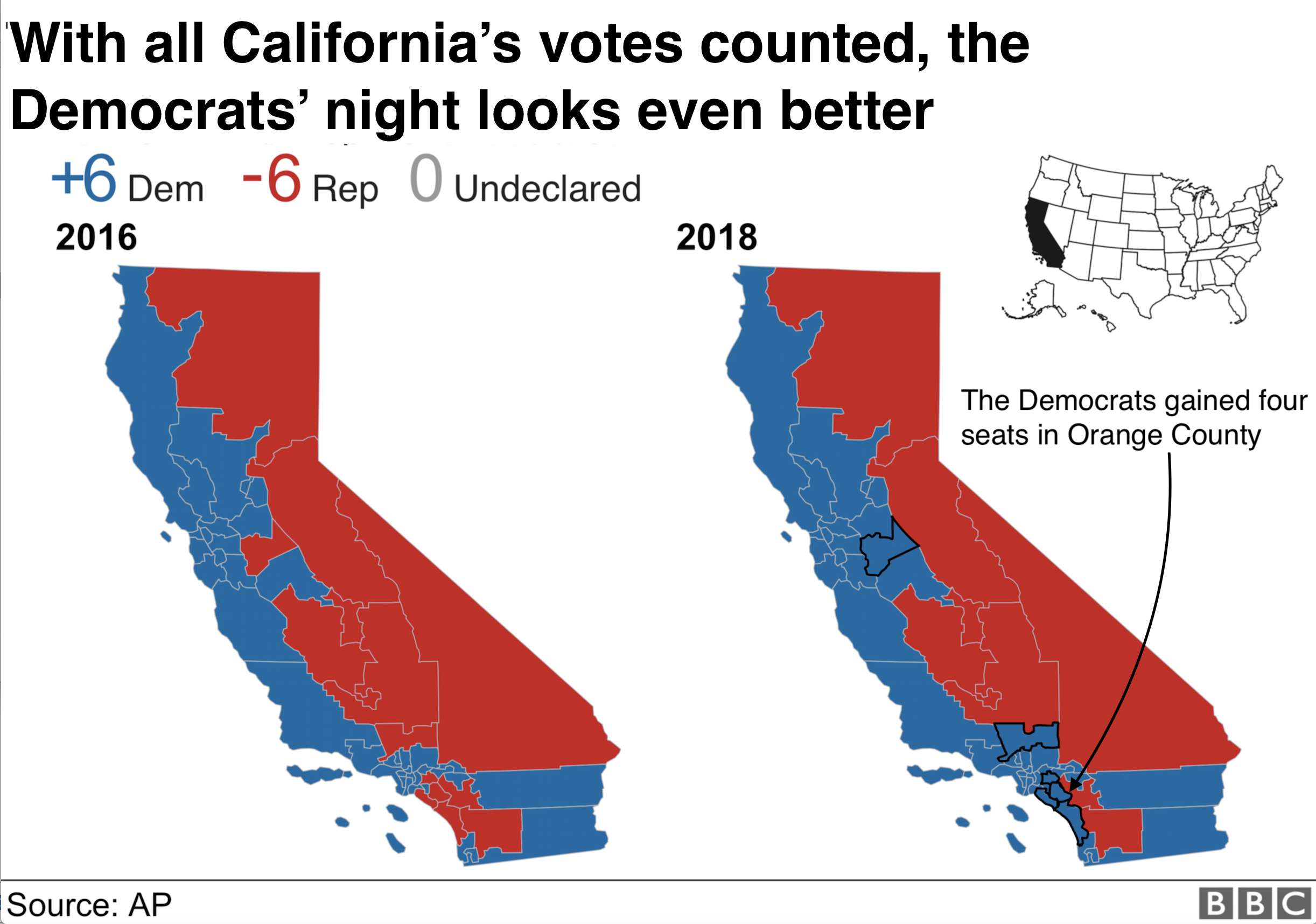
Add another two seats elsewhere in California, and there are only eight Republicans left in the state's 53-seat congressional delegation.
Except for a small Republican-held slice of southern Washington, the entire Pacific coast of the continental US will now be represented in the House by Democrats.
Orange County was expected to be a battleground in 2018.
Democrat Hillary Clinton beat Mr Trump throughout the area in 2016, and the president remains largely unpopular there. The scope of the rout, however, was remarkable.
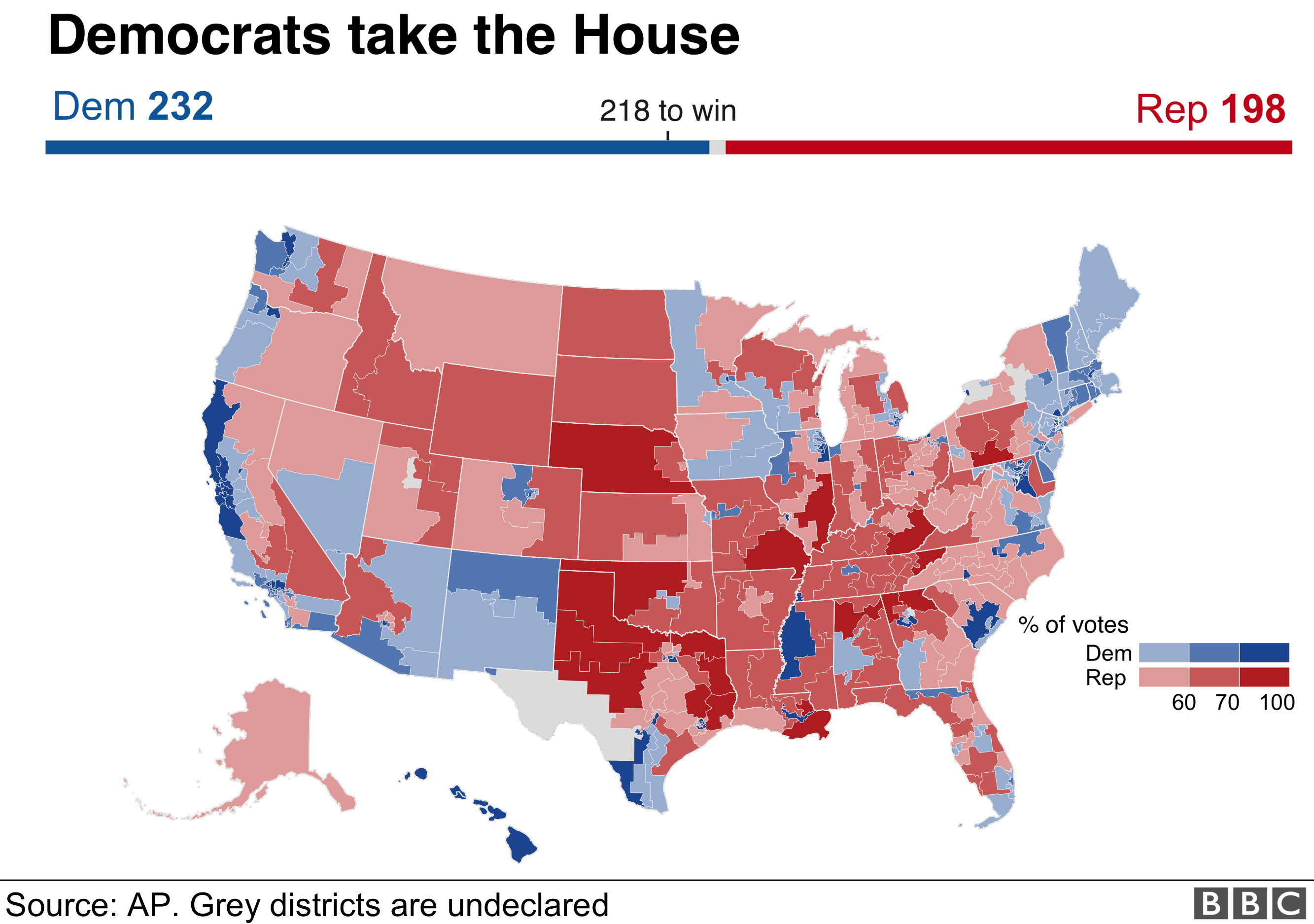
Combined with post-election-day victories for Democrats in New Jersey, Washington, Georgia and Maine (and more on that in a minute), the Democratic House majority will have at least a 14-seat cushion with five races left to be decided.
Although the size of the victory in terms of seats is dwarfed by the Republican waves of 2010 and 1994, it is the largest Democratic House gain since the post-Watergate election of 1974.
A more modest Senate swing
If the House results were good news for the Democrats, the Senate appeared to be another story. Midway through election night, a flurry of embattled Democratic Senate incumbents were toppled.
Joe Donnelly, despite pre-election polls showing he might hang on to his seat in conservative Indiana, was quickly defeated.
Claire McCaskill, who seemed to be living a charmed political life, saw her luck run out.
Heidi Heitkamp in North Dakota, a state that Mr Trump won by more than 30% in 2016, was buried.
Yes, Democratic incumbents won surprisingly easy victories in Trump-carried states of West Virginia, Pennsylvania, and across the Midwest, but the losses were mounting.
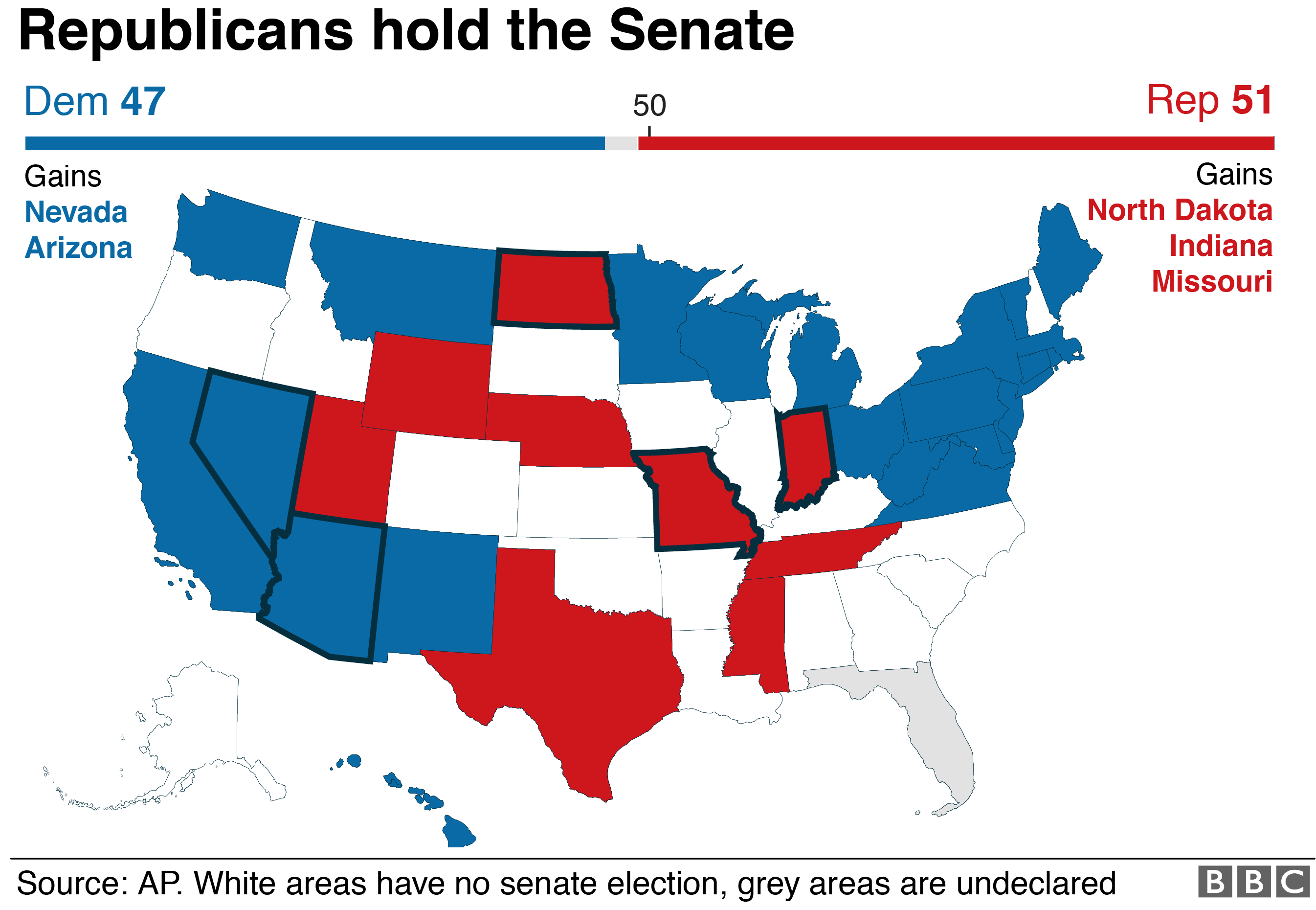
Later in the evening, it became clear that Democrats would pick up a seat in Nevada - beating the one Republican running in a state Mrs Clinton carried - but it still seemed like the Republicans were on a roll.
Instead, Democrats stopped the bleeding. Jon Tester held on in Montana, another very Trump-friendly state. And Kyrsten Sinema defeated Martha McSally to pick up a Republican-held seat in Arizona.
After a week of recounting battles, Rick Scott upended Democratic Senator Bill Nelson in Florida, which - along with governor wins in Georgia and Florida - gave Mr Trump a bit of late good news.
It's hard to over-estimate the value of Florida to the president - some might say it's his real home.
There's still a Mississippi run-off scheduled in a week, but the chances are that the Republicans will hold that seat.
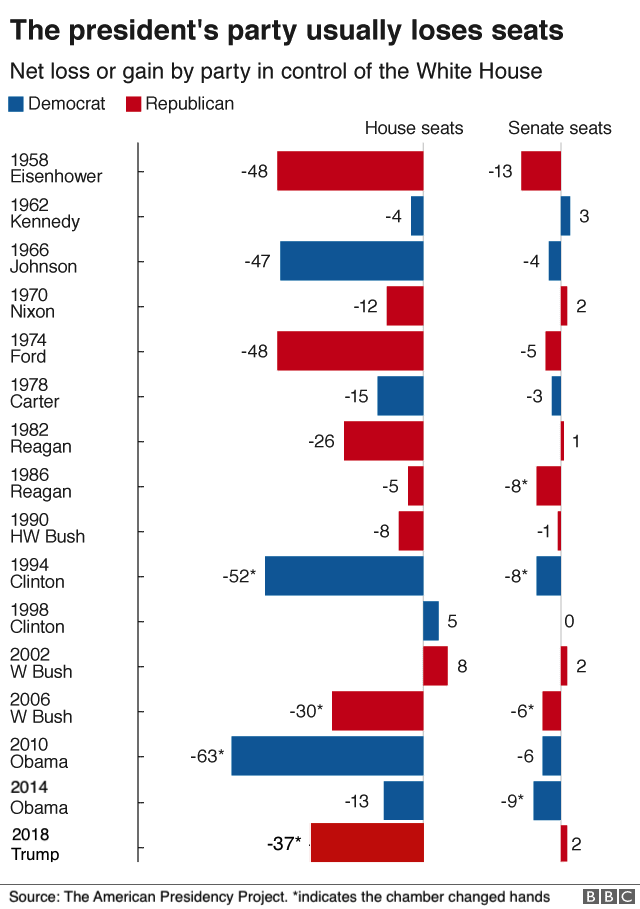
Add in the Democratic win in an Alabama special election last year, and Trump will probably enter the second half of his first term with one more seat in the Senate than he had when he started, 53 to 47.
It provides a bit of breathing room for his party, but it also means the chamber is decidedly in play in 2020, when more Republicans will have to defend their seats in battlegrounds states.
Mr Trump, in a Friday tweet, called his party's two-seat gain in the Senate an "epic victory" and downplayed the Democratic pickup in the Senate.
The Senate gains are indeed somewhat rare for a president, although that has much more to do with the idiosyncrasies of the 2018 seats up for election than larger trends.
As FiveThirtyEight's Geoffrey Skelley explains,in state after state Democratic Senate candidates in 2018 outperformed the "partisan lean" (compared to the national average) of the states they were running in.
Meanwhile, in the House, only five of the last 15 mid-terms had larger gains for the out-of-power party.
If this was an epic victory, Republicans probably shudder when thinking what defeat might have looked like.
Mia gets love from voters, not Trump
One of the more unusual portions of Mr Trump's post-election press conference was when he began listing names of Republican candidates he felt had not adequately supported him - and went on to lose.
"I'm not sure that I should be happy or sad, but I feel just fine about it," he said.
Carlos Curbelo of Florida, Mike Coffman in Colorado, Barbara Comstock in Virginia and Illinois' Peter Roskam. They all didn't want the Trump "embrace", the president said, and paid the price for it.
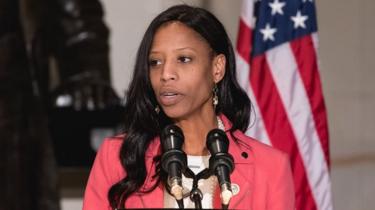 GETTY IMAGES
GETTY IMAGES
"Mia Love gave me no love, and she lost," he noted of the only black Republican congresswoman, who was trailing her opponent on election night. "Too bad. Sorry about that, Mia."
The thing is, Ms Love, running for re-election in her northern Utah district, has pulled ahead by 1,516 votes in the latest tabulations.
Victory is far from assured, but it's going to be close.
And one for the political nerds... Maine
As mentioned, that Maine election was a bit unusual. The Second Congressional District race was the first test of the state's new "ranked choice" voting system. Because of it, a Democrat unseated an incumbent Republican who would have been re-elected under the old system.
When Maine residents headed to the polls two weeks ago, they voted for their first choice - and then marked who their second preference would be if their first pick didn't end up in the top two and no one received a majority of the vote.
On election day, Republican Bruce Poliquin received 46.2% of the vote, while Democrat Jared Golden tallied 45.5%. After the second choices of those who opted for independent and third-party candidates were tabulated last Thursday, however, Mr Golden pulled ahead and won the seat.
"Instant runoff" systems like this have been cited by electoral reform advocates as a means to avoid third-party spoiler candidates and ensure that elected officials enter office with a majority of support.
The Republican is already challenging the legality of the process, but if it's upheld other states may give the system a look.







